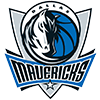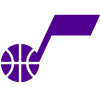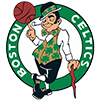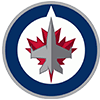Top Fantasy Draft Strategies for Success
On the surface, a fantasy draft seems quite straightforward. Draft the best players, dominate, and win. Of course, it's not that simple. By following a handful of these simple draft strategies, you can give yourself the best chance of outlasting your competition when all is said and done.
Why Fading Goaltenders Can Be a Winning Strategy
For the record, this is not my preferred strategy, but it seems to be a more reasonable option than a year ago, given how badly top picks such as Igor Shesterkin and Juuse Saros flopped. A couple of things need to happen for this to work successfully. For starters, you need to be in a league with a limited number of teams. If your league has 10-plus teams, any goaltender remotely worth considering is going to be drafted. Second, to even consider this, you must be prepared to devote a ton of time to managing your team because you're going to have to scour the waiver wire every single day to find backups and platoonmates that are starting. It can work in the right scenario, especially given the fact that there are so few workhorse No. 1 options left in the league, but it requires a ton of work.
The Risks of Stacking Players in Fantasy Hockey
Stacking is a very popular way to go about things in football drafts. For example, if you draft Ja'Marr Chase with your top pick, adding Joe Burrow at quarterback is a
Top Fantasy Draft Strategies for Success
On the surface, a fantasy draft seems quite straightforward. Draft the best players, dominate, and win. Of course, it's not that simple. By following a handful of these simple draft strategies, you can give yourself the best chance of outlasting your competition when all is said and done.
Why Fading Goaltenders Can Be a Winning Strategy
For the record, this is not my preferred strategy, but it seems to be a more reasonable option than a year ago, given how badly top picks such as Igor Shesterkin and Juuse Saros flopped. A couple of things need to happen for this to work successfully. For starters, you need to be in a league with a limited number of teams. If your league has 10-plus teams, any goaltender remotely worth considering is going to be drafted. Second, to even consider this, you must be prepared to devote a ton of time to managing your team because you're going to have to scour the waiver wire every single day to find backups and platoonmates that are starting. It can work in the right scenario, especially given the fact that there are so few workhorse No. 1 options left in the league, but it requires a ton of work.
The Risks of Stacking Players in Fantasy Hockey
Stacking is a very popular way to go about things in football drafts. For example, if you draft Ja'Marr Chase with your top pick, adding Joe Burrow at quarterback is a smart move because any Chase success will be the result of Burrow throwing him the football, health permitting, and you'll essentially double up your point total. It's not that simple in hockey. For starters, most coaches these days change lines like the average person changes their underwear. Giving Vincent Trocheck a boost because he's expected to center Artemi Panarin with the Rangers sounds great in theory, until Mike Sullivan changes his mind, and next thing you know, Trocheck is skating with Brett Berard and Taylor Raddysh, and you passed on an inferior player on draft day because you already had Panarin. It's just not a sound strategy.
Avoiding the Temptation to Reach for Prospects
This is my preferred strategy every single season, but it's more important this year than in recent memory. Last year's rookie class was loaded. We had Macklin Celebrini, Lane Hutson, Will Smith, Cutter Gauthier, Dustin Wolf, etc. You get the point. Who are we expecting to break out this time around? It's unclear if 2025 No. 1 overall pick Matthew Schaefer will even begin the year in the NHL. My guess is that he does, but I'm barely interested in drafting top forwards on the Islanders, let alone an 18-year-old defenseman. I really like Ivan Demidov in Montreal. Zeev Buium in Minnesota and Zayne Parekh in Calgary should get a chance to make an impact, but none of these guys are sure things, and I'm not passing on a proven veteran commodity on draft day to roll the dice on one of them.
Consider a Team's Worst-Case Scenario
If there's one lesson I learned from taking part in dozens of fantasy leagues last year, it was this. Hockey, at least from a fantasy standpoint, is very much an individual sport, believe it or not. We're betting on individual talents and hoping they lead us to success. If a team struggles, then all bets are off. I want to start by saying this applies to goaltenders a bit more than skaters. I touched on Shesterkin and Saros earlier. The Rangers and Predators crumbled to unprecedented levels a season ago, and both netminders saw their numbers crater as a result. Shesterkin still played well despite the ugly statistics, but Saros was all but unplayable late in the year. The same goes for Boston's Jeremy Swayman. Even if a worst-case scenario hits only 5-10 percent of the time, it's worth considering. If the Penguins are terrible as everyone expects, maybe Sidney Crosby agrees to be traded. That would be great for his fantasy value. On the flip side, maybe the team is out of it, and he wants to stay, and he gets shutdown late in the season with a nagging injury. All the scenarios are worth monitoring on draft day.
How to Evaluate Past Injuries in Fantasy Drafts
When it comes to evaluating past injuries, I always take the upside consideration into account. Take Jack Hughes in New Jersey, for example. Hughes has played exactly 62 games in each of the past two seasons. In other words, he's missed 40 of 164 regular-season games over the same period. If you spent a late-first or early-second round pick on him in your draft, you were probably in a boatload of trouble. That said, his ceiling, health permitting, is that of one of the top five scorers in the NHL. A player like that, at any sort of discount, can win you your league. On the flip side, take a guy like Mark Stone in Vegas. Stone played 66 games last season and had 67 points, but he's upwards of a decade older than Hughes and has a more checkered injury history. The upside simply isn't as high, and I'm not rushing to pick him on draft day. Again, evaluate on a case-by-case basis.
Balancing Upside Potential with Reliable Draft Picks
Swinging for upside is always a positive in fantasy drafts, and it's the approach I like to go with. That said, you're almost always in better shape selecting the known commodity instead of a potential breakout candidate. For every breakout candidate you "steal" in your draft, you're going to make countless poor picks employing that strategy. Of course, there are exceptions to this rule. For example, 40-year-old Alex Ovechkin is highly unlikely to approach the 44 goals he scored a season ago. 39-year-old Evgeni Malkin is a future first ballot Hall of Famer. He also had just 50 points in 68 games last season and plays for one of the worst teams in the league. Maybe you roll the dice on an upside play instead of one of them. In his rookie year, Connor Bedard was being drafted ridiculously high, going ahead of perennial All-Stars. He went on to have 22 goals and 61 points in 68 games in his freshman campaign. There's a reason the same, steady performers go off the board early in drafts every single year.






























